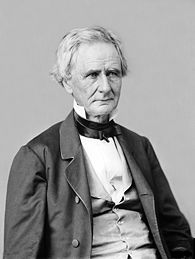With all the political positioning of climate legislation as 'creating' jobs it is startling how reticent the proponents are about actual numbers. From doing due diligence I know some of the numbers but public sources that have specific wages that I can link to aren't common.
Some of the jobs are well paying. For example the insiders at First Solar have sold $1.1 Billion worth of stock in the last 15 months.
(bless those German hausfraus paying the feed-in tariff)
The City of San Francisco seems like a good place to look for work:
..."If there are 25 people working on climate protection issues for the city, that's a good start," Newsom spokesman Nathan Ballard said....
...At least 12 San Francisco Public Utilities Commission staff members work on climate issues related to water and energy, including a $146,000-a-year "projects manager for the climate action plan."...
...The list doesn't include the scores of staff members who work on broader environmental policies, like the recently hired $130,700-a-year "greening director" in Newsom's office...
I was going to link to some offerings at Monster.com (I liked the Vestas ad, "See the sun rise from 300 feet up") but this story on BWEN's expansion (also, see
post immediately below) from the
Abilene ReporterNews has a lot of detail :
...Last week the DCOA approved $4.7 million in incentives to assist Tower Tech in constructing a $20 million plant. Tower Tech will spend more than $20 million to build and equip its manufacturing plant in the Five Points Business Park in northwest Abilene on a 40-acre site north of PWP Industries, according to DCOA documents. "Whenever we ran into an issue, they went the extra mile to find solutions," said Paul Smith, of Tower Tech Solutions, in a news release. "The support during this process was excellent."
The Five Points Business Park provided the transportation infrastructure that the company needed, according to city officials and Tower Tech. Located just south of Interstate 20, the park also offers a railroad spur that allows rail access to the four-lot property where the manufacturing plant will be built.
Of the 150 jobs, 39 will pay $30,000 to $40,000 a year, according to the DCOA, while 105 of the positions would pay $40,000 to $50,000. Six of the jobs would pay more than $60,000.
The DCOA will also pay the company $2 million over five years at 10 percent of capital costs up to $400,000 a year.
Indirect incentives to the company will total $911,250, according to DCOA documents. The company will need several entry-level welders, and the DCOA approved paying $75,000 to expand Cisco Junior College's Fast Track Welding training program.
To extend rail service into the south boundary of the company's location in the business park, the DCOA will pay $236,250.
Also the DCOA will convey an estimated 40 acres of land in the business park to the company, an estimated value of $600,000....




